Oklahoma Garden Planting Guide
For those of you who are new to vegetable gardening, I've linked OSU's Garden Planting Guide. It is full of useful information, but you should apply some common sense and alter their recommendations as needed/if needed.
For example, even though they give fairly specific planting dates for most kinds of vegetables, you can't blindly plant "by the calendar" if the weather conditions are not appropriate for planting a given crop on a given date. When planting, you have to take into consideration the average soil temperature of your soil at planting depth, the air temperature and the forecast. If either the ground or air is not reliably warm enough, you'll need to wait and plant after they reach the right range.
Spacing also is highly variable. You may find you use different spacing for specific reasons--like, maybe you're growing either the Square Foot Gardening way and want to follow Mel's spacing recommendations or you're growing following John Jeavon's Biointensive method and want to use his recommended spacing and interplanting methods.
Still, it is a very useful guide. Just taylor the recommendations to suit your specific needs.
Dawn
Here is a link that might be useful: Oklahoma Garden Planting Guide
Comments (32)
soonergrandmom
14 years agolast modified: 9 years agoLike - "Here's the recipe, but don't follow it." or maybe "This is my advice, but I advise you not to take it." LOL
Okiedawn OK Zone 7
Original Author14 years agolast modified: 9 years agoCarol,
Well, you know, it is hard for any sort of guide to be a "one size fits all". LOL
Maybe if we lived in a state with normal weather, but since we live in a state where we never know if it will be 8 degrees on onion-planting day (Feb. 15th for me) or if it will be 80 degrees on that day, I just wanted to stress that the guide is a starting point, and not engraved in stone.
I don't pay attention to the planting info on seed packets either!
Dawn
Related Professionals
Cottonwood Landscape Architects & Landscape Designers · Fillmore Landscape Architects & Landscape Designers · Leawood Landscape Architects & Landscape Designers · Deerfield Beach Landscape Contractors · Hendersonville Landscape Contractors · New Providence Landscape Contractors · Ocoee Landscape Contractors · Baileys Crossroads Landscape Contractors · Ansonia Landscape Contractors · Del City Decks, Patios & Outdoor Enclosures · Fort Collins Decks, Patios & Outdoor Enclosures · Huber Heights Decks, Patios & Outdoor Enclosures · New York City Decks, Patios & Outdoor Enclosures · Richmond Decks, Patios & Outdoor Enclosures · Woodland Hills Decks, Patios & Outdoor EnclosuresMelissa
14 years agolast modified: 9 years agoOMG!! Carol you are too funny! I needed a good laugh today and I just got it. I was actually going to wintersow this last two weeks, but it is too darn cold. I don't even want to be in the garage! Do you think I can still wintersow annuals and perennials in a couple of weeks? I sure hope so.
soonergrandmom
14 years agolast modified: 9 years agoMelissa, The recommended starting date is 21 December. I believe that means that you shouldn't plant BEFORE that date. LOL If you do them in February, you will still be OK, and of course some of them shouldn't be planted before March anyway. The only hard part of wintersowing is deciding WHEN it is time to plant. If I were you, I would be most happy that I didn't have them out yet.
If a plant is hardy enough to live through a normal winter in our zone, then you can plant it any time in January or later. Get all of those planted first and they will come up when it's time and as long as they get a little water they will be fine outside.
Then think about the things that are likely to reseed in our area. If the seed can fall from the plant, stay there all winter and then make a new plant, then obviously you could put it in a jug instead and it would come up in a more protected environment. We normally call those "Hardy Annuals".
There are lots of flowers that lend themselves to wintersowing methods, but a tender plant is still vulnerable to the elements arter it germinates.
It will be a long time before I start most veggies. I have only done this one year and I raised many healthy plants. It would appear that even the tomato plants that were winter sown were some of the strongest ones I had. You don't have to worry about damping off or "harding" so all of that is a plus, but remember that a young tomato plant is still a tender plant and you will have to cover it or take it in when a freeze threatens. I will still use lights inside also because I have to have a place to start peppers and I don't do that outside.
Next topic....One of the hardest things will be hearing the gardeners in the southern part of the state talk about what they are planting and holding yourself back. Dawn lives over 330 miles from us and her climate is MUCH different. Ask me how I know! I lived one county north of her as a child, then moved back there again as an adult and spent 12 more years there. The weather is hot, unpredictable, dry, unpredictable, IF it rains (big if), it may flood, etc. Most of the ground is orange red clay. In the early days, no one believed that oil could come from that red dirt. Not many miles from Dawn, my grandparents gardened in sand. It is so sandy in some places it almost looks like the beach, but it was still hot, hot, hot. Dawn's plants will be in the ground long before it is safe to plant ours.
As for being too late.....I started my fall crops last year using the exact same technique by planting in jugs and putting them in the shade. It was the hottest part of summer and they still did just fine. After they were in the garden, the weather failed to cooperate but the plants were healthy.
spademilllane
14 years agolast modified: 9 years agoSo.....for those of us mid-state, should we plant the early veggies at the New Moon (February 14th) or the Full Moon (February 28), or sometime between the two when our fingers won't freeze?
Okiedawn OK Zone 7
Original Author14 years agolast modified: 9 years agoCarol,
Some of my reseeding annuals (the ones that bloom earliest and tolerate a lot of cold) sprouted in November and December. This includes the Texas bluebonnets, larkspur, poppies, malva sylvestris and some of the Laura Bush petunias (I haven't been down to the garden the last couple of days to check and see if they're still green and alive.) It is nice to see the tiny green plants in the midst of the otherwise rather dull colors of the native pastures in winter.
I'm planning to wintersow some flowers today or tomorrow, depending on how badly my hands freeze when I go outside to take care of the animals this morning. If my hands freeze into huge blocks of ice, I won't be able to wintersow until my hands thaw out.
The temperatures here today (10 degree low overight) are among the coldest we've seen since moving here, but not the absolute coldest we've seen. I do think the wind chill may be the coldest we've had here...it is -3 right now. We got warmer than forecast yesterday....made it all the way up to 28 degrees.
Before I even contemplate starting seeds (other than the wintersown ones), I need to go do some research on the Northern Atlantic Oscillation and see what kind of late winter and eary spring weather it brings us. It is my understanding that this week's cold spell is related more to the NAO than to El Nino (which is a part of the ENSO).
I'm used to being able to plant pretty early, but this year's cold weather pattern is so much worse than we usually get, that I am going to be very cautious about starting anything too early.
Still, I normally can plant weeks and weeks ahead of those of you further north and that's likely to remain true even if I am planting late (well, late for me).
Robert, I have no clue. In a normal year, I think you could plant onions the same time I do--in mid-February, for example. This year, though, I'm wondering if maybe I ought to plant a couple of weeks later than usual and if I do that, then y'all might want to plant late too since central Oklahoma rarely warms up earlier than southern Oklahoma does.
By the end of January, we should be able to tell if the cold spells experienced in December and January indicate a persistent pattern of cooler-than-usual weather, or if they are an anomaly. By Super Bowl weekend, I always feel like I understand the current weather patterns well-enough to decide whether I'll start seeds "on time" or "late".
I don't plant by the moon. I plant by soil temps, air temps and anticipated weather patterns. Some cool season plants cannot tolerate temperatures below a certain level once the plants are a certain size. So, we have to time our plantings accordingly. This is one reason cool-season crops can bolt or underperform even though we plant them at the right date according to the calendar or the phase of the moon. The crops most likely to 'malfunction" in cool weather include the bienneials like broccoli, cauliflower, carrots and onions.
That's why with most of these types of plants, we try to time our plantings no earlier than 6-8 weeks before our average last frost. The problem is that in recent years, we've had late hard freezes or frosts as much as 4 or 5 weeks later than the average and it is a big deal when that happens.
My average last freeze date is supposed to occur the last week in March. For the last 4 or 5 years, it has occurred from about mid-April through early-May. That's a huge difference for cool-season plants. Can I wait and plant cool-season crops very late to avoid the last freezes? No, because the hot weather will arrive and will kill them or cause them to bolt before I get a harvestable crop.
The southern plains are a very difficult place to grow cool-season crops because our weather is so inconsistent.
Dawn
spademilllane
14 years agolast modified: 9 years agoIs the 40 degree soil temperature key, then, for the cool season planting? And, rather than using 40 degrees as a mark of attainment, use an average mid-day temp of 40 degrees over, say, a 7 day period?
Or, should we forget using the moon or a thermometer or a calendar or meteorological charts or the ache in my big toe and just use the best indicator available--wait until Dawn plants?
--Robert
Okiedawn OK Zone 7
Original Author14 years agolast modified: 9 years agoRobert,
It has to be a combination of air temperatures plus soil temperatures for transplants. Here's a couple of examples:
BROCCOLI: Here's why we don't generally direct-seed broccoli here. It needs soil temperatures of at least 50 degrees to germinate and if we wait until soil temps are in that range, broccoli usually won't have time to grow and form big heads before the air temps are hot enough to make the heads bolt and bloom before they reach full-size. By starting with 3 to 5-week old transplants, and by setting them out at the "right" time, we normally get to harvest before the heat affects the plants
Broccoli grows best in air temperatures between 40 and 70 degrees, but the size of the plant at certain air temperatures matters too. If broccoli plants are exposed to low temps below approximately 40 degrees for about 2 weeks after the plants are 4 to 6" tall, then they go dormant when they are at those low temps and bolt or go to seed after the weather warms up and they resume growth. Sometimes they give us what are known as button heads---very small heads about the size of a half-dollar, instead of the usual 8-10" across. For these reasons, transplants are best but only small and young transplants and only when the lows in the 40s are mostly behind us.
So, even though it is generally "safe" to transplant 3 to 5 week old broccoli plants into the ground two weeks prior to the date of your last average frost, your plants still can meet with disaster if the temperatures are behaving erratically. Thus, in erratic weather, I'll plant later rather than sooner.
CARROTS: This is another biennial vegetable that is greatly influenced by weather. Carrots generally can be planted from seed roughly 85-90 days before your average daytime highs begin regularly exceeding 85 degrees. That sounds simple enough, except that carrots can be severely affected by cold temperatures at and below about 45 degrees if those temps last for a few weeks after the carrots have sprouted and are activey growing.
The trick with carrots, then, is to count back 90 days from the time your air temps begin exceeding 85 degrees, and plant your seed then but only if you are fairly certain your overnight lows will stay consistently above 45 degrees or will only briefly drop below 45 degrees.
The carrot situation is complicated by erratic spring weather. Suppose I should plant my carrot seed by March 1st so the carrots can mature before the air temps start exceeding 85 degrees. Let's pretend my seeds sprout and are growing well before the end of March. Then, more or less out of the blue, a huge cold spell arrives in April ands hangs around 2, 3 or 4 weeks pushing the carrots into a dormant state where growth halts. Suddenly, the prospects of a good carrot harvest are less likely because when the late cold spell goes away, the carrots break dormancy and, since they already had a good growing spell followed by cold-induced dormancy, they're likely to bolt and set seed once their growth resumes.
You can try to get around the cold temp thing by planting carrots later, but they grow best at temps below 85 and when they grow at temps above 85, both their texture and flavor are negatively impacted.
ONIONS: These are one of the most difficult crops to grow in areas with erratic spring weather. With onions, you have the complicated interactions between soil temperature, air temperature and daylength.
We can set out onion transplants beginning around mid-Feb. (and some years some of us here in southern OK have planted onions as early as the first week in January) and expect to have a good crop. Of course, we're assuming the air temperatures will stay in the range that onions like during that 4 to 6 week range between the time we plant and the last frost. Some years it works out that way, but some years the temperatures get too cold after the onions reach a certain size and dormancy is induced. Then, when the onions resume growth, they think it is a "new year" so to speak and then go to seed.
With onions, plant size + temperatures is the key. If you plant smaller onion plants (those about 1/4" in diameter or smaller), they are less likely to bolt after cold-induced dormancy than larger plants. The key temperature is 45 degrees and smaller transplants can handle those temps for a prolonged period but larger ones can't.
So, why not wait until the last frost date or later to plant onions? Because they need 90-110 or 115 days of normal growth before daylength induces bulbing. If you get them into the ground only 60 days before bulbing begins, you'll have significantly smaller onions.
So, even though it is nice to hae a planting guide that gives us dates to plant specific vegetables, those guidelines are based on average weather conditions in average years. Crops planted on those dates ought to perform well and produce a good harvest, but only if the weather performs as expected.
Since the trend the last several years has been to have more periods of colder-than-average weather later in the spring than normal, I have found that planting strictly by the dates is less reliable since about 2005 than it was prior to that. So, I look at the whole picture....what the overnight lows have been, what the high temps have been, and what the general weather pattern has been: average temps, above-average temps or below-average temps.
Generally, most of y'all are "safe" if you plant later than I do, and there are some people in parts of eastern OK who don't see the recurring cold spells in spring that I do because they're at a higher elevation (I'm in a river valley) and I think they could plant earlier than me most years.
I use the Mesonet readings for soil temps and air temps to track trends throughout Jan-Feb-Mar to help me decide when to plant, but I also take a thermometer out to the garden and track the temperatures in my beds too--because it doesn't matter what my mesonet station says if the temps in my garden aren't the same as those at the mesonet station.
We are given planting dates by the extension service, and even on the backs of seed packets, to give us a guide to follow, but real weather often makes that info unreliable.
Feeling more confused? So I am. Our weather has not behaved "normally" for 4 or 5 years now which makes me trust established planting dates less and less.
Dawn
billstickers
14 years agolast modified: 9 years agowhat would you recommend for lettuce (both leaf and head) to get the best chance of a good harvest?
the guide indicates either seed or transplants. are the dates only from seed?
spademilllane
14 years agolast modified: 9 years agoI went through your calculus and came up with the following for broccoli and carrots (and I also checked out where the broccoli and carrot capitals were to get a better idea of the "ideal" weather condition).
Broccoli 80-90 days
Concern #1: grows best between 40 and 70 degrees
Concern #2: avoid 2-week block of below-40 temperaturesMaximum Transplants: 5 week plants = 35 days
March 9th High: 60 Low: 37 (followed by 1 week of below 40)
March 17th High 63 Low: 40 (begin 40 degree temperatures)
April 12th High: 70 Low: 47 (begin 70+ degree temperatures, end of optimal growing conditions)
April 9th to March 17th Total Days: 34
April 12th to March 17th Total Days: 26Time to plant broccoli in pots: February 2, 2010
Total accrued optimal growing days: 69 days
Number of days short: 11 daysSide Note: Broccoli Capital: Greenfield, CA
Carrots 70-90 days
Concern #1: Overnight lows consistently above 45 (bolting issue)
Concern #2: Highs stay below 85April 4: High: 68 Low: 45
June 6: High: 85 Low: 65Total accrued optimal growing days: 62
Number of days short: 8
It looks like carrots are not an ideal crop here in OK. OSU states Feb 15 to March 10, a big difference in dates...?
Side Note: Carrot Capital: Holtville, CASo, clearly I need to research each of the veggies I'm planning on planting and find out more about each one's "ideal" condition and then try to fit (or "curve fitting" or "best match") them to local conditions.
I also need to track down better data tables. NOAA looks completely disorganized with so many different data sets available and all of them on different websites....Also, as you point out, using 100-year averages is somewhat less than helpful, as it looks like the weather cycles here *sometimes* go in 5 to 7 year trends.
Thanks for the info Dawn, and any other info is always appreciated.
--Robert
Okiedawn OK Zone 7
Original Author14 years agolast modified: 9 years agoThere are four basic types of lettuce: Romaine (aka C0S), Crisphead, Butterhead and Leaf. To me, it seems like I get the best harvest from Leaf and Romaine types with Butterhead in 3rd place and Crisphead in 4th. (Heat can prevent Crispheads from develop properly, so if spring weather heats up too fast, your Crispheads may get puffy and be of poor quality)
LEAF: I think that leaf lettuces produce better than the other 3 types in our climate, assuming they're planted early and the weather doesn't warm up insanely fast. Of these types, Black-Seeded Simpson is probably the most heat tolerant and the newer Simpson Elite is supposed to be even more heat-tolerant but I haven't tried it. Others that perform well include Salad Bowl, Green Sails, Red Sails, Lettuce Bowl, Oakleaf, Green Deer Tongue, Red Deer Tongue, Ruby Red and New Red Fire. Most leaf lettuces mature 45-50 days after planting, but also can be harvested using the cut-and-come again method for a perpetual harvest until the heat burns them up.
CRISPHEAD: These are the head lettuces commonly seen in grocery stores and often commonly referred to as Iceburg lettuce. These have large, firm heads with leaves that are firm and crisp/crunchy and pretty prominent vein and ribs. They take a long time to mature...up to 80 or 85 days and probably not many mature in much less than 70 days, Some Crisphead types that do well in our climate include Great Lakes, Vanguard, Cardinale, Mission, Iceberg and Summertime.
ROMAINE/COS: These produce a very upright or strongly vertical head that easily attains 8-12" or more in height. Although they don't form as firm of a head as iceberg, they do form fairly firm heads, but their texture is not like an iceberg...it is more like a leaf or butterhead type texture. The best Romaines for our climate include Paris Island Cos, Devil's Tongue, Outredgeous, Roguge d'Hiver, Romaine and Vert Mar. Baby Star and Little Gem are mini-romaines that only gets about 5-6" tall.
BUTTERHEAD: This type of lettuce forms a rather loose head, almost like the lettuce couldn't decide it it wanted to be a leaf lettuce or a crisphead so is stuck somewhere between the two. Bibb lettuce is a commonly grown type of Butterhead, and some others are Buttercrunch, Sierra, Sangria, Blushed Butter Oak, Speckles and Yugoslavian Red.
The DTMs given for the lettuce on the planting guide are broad DTMS and can apply to either direct-seeded lettuce or transplants and you can do it either way. Some leaf types are large enough to harvest as cut and come again types as quickly as 30-40 days from seeding although they are not full-sized that quickly.
If you want to raise your own transplants inside under lights, sow the seed about 3 or 4 weeks before you intend to transplant them outside and keep the grow lights so close to the lettuce plants that the plants almost touch the lights. Otherwise, lettuce plants can get very leggy very quickly. Be sure to harden off transplant over the course of about a week before transplanting them outside.
You can direct seed or transplant roughly 4 to 6 weeks before your average last frost date and transplants will give you a harvest about 2 weeks earlier. Lettuce can freeze if exposed to temperatures below roughty 25 degrees.
If you want to grow several varieties and don't want to buy several packets of seed, look for lettuce mixes or mesclum mixes.
Dawn
mulberryknob
14 years agolast modified: 9 years agoSometimes ignorance is bliss. I didn't know anything about broccoli's needs when I started growing it over 20 years ago. Just looked for the shortest DTM I could find and grew Early Emerald. Started the seed mid Feb on a warm bench here in Z6b. moved off the bench at 3 weeks and potted up. Put it in the garden April 1st. Started picking dinnerplate size heads in midMay and put up broccoli on Memorial Day weekend. I raise 90 plants a year and the only year haven't had lovely large heads was 09 when the seed co I ordered from--in Dec of 08--didn't get me the seed until last few days of Feb. Those who have been reading my posts know that I grumbled about the Calabrese pkt that I bought at WM being labeled "early" when it definitely wasn't. This fall wasn't conducive to broccoli either. Sept and Oct stayed too cloudy and the plants stalled, finally made teacup sized heads in Nov. The Chinese Cabbage did great though and we're still eating on fresh heads that I put on the porch.
I have plenty of Early Dividend and Packman seed for this year, both of which made for me last spring, but I won't start seed until midFeb at least.
Okiedawn OK Zone 7
Original Author14 years agolast modified: 9 years agoDorothy,
I agree that ignorance is bliss. Everything I've learned about raising veggies....and especially cool-season veggies since they are so temperature-sensitive.....I've learned from it having those crops perform poorly and then having to do the research and figure out why.
Many folks think cool-season crops are easier than warm-season crops, but I think the opposite tends to be true. If I can get a warm-season crop in the ground at the right time and not have it hit by a late frost, it likely will produce well. With the cool-seasom crop, it is iffy....sometimes good production, and sometimes not and it all hinges on whether it turns terribly cold after the cool-season crops hit a certain size.
For years, I understood all about tomatoes and how their pollination/production is affected by temperatures, but didn't even think about temperatures affecting other plants as well. I've learned a lot more about soil and air temps since then, but there's so many variables that even "the rules" aren't always true. One of the best tomato years I had was in either 1999 or 2000 and I had Big Boys blooming and setting fruit well during a period where the nighttime lows were 80 or so and the daytime highs were in the 100-110 degree range. Big Boys should not set fruit at those temperatures, but those particular plants did. It defied all logic as gardening sometimes seems to do.
Dawn
mulberryknob
14 years agolast modified: 9 years agoSomething I've learned about broccoli is that mulching the roots good is critical. The tops can take more heat than the roots. So by the last frost date, MidApril here, I have my plants' roots covered up. And I almost never leave the plants in the garden after the main head is cut. The sideshoots are always bitter, not worth watering the plants to get them. So by June 1st, my plants are in the chicken pen for the chickens.
So for me broccoli gets seeded in midFeb, transplanted by April 1st, Mulched by midApril, picked in May and pulled by June 1st. 3&1/2 months. And I do Super Sugar Snaps the same way, except it only takes 2 weeks from seeding to transplanting. But start in MidFeb and pull vines first week of June.
tigerdawn
14 years agolast modified: 9 years agoI was thinking about doing an experiment:
Plant a couple of plants of the cool crops each week and see which ones do best. I don't plan to can or otherwise save much of my harvests since I don't have the time, space, or ability.
Could this be a worthwhile experiment or should I just wait until Dawn says to plant like everyone else? LOL!
Okiedawn OK Zone 7
Original Author14 years agolast modified: 9 years agoTigerdawn,
I think that if you want to experiment with planting dates, you should do it. I have experimented a lot here to figure out what works for me in my location with my weather and soil. I think everyone needs to look at OSU's guidelines and recommended dates and then experiment to see what works for them.
Remember though, that early planting of cool-season crops involves more than just protecting them from the cold air or a hard frost on cold nights because they will grow slower (if at all) in colder soil. Also, they are biennials and you can't change their nature and their tendency to go dormant in colder conditions and bolt a few weeks later after more typical weather returns.
One thing I learned through early planting and experimentation during our first few years here was that pretty much anything I planted while soil temps were lower than 40 degrees didn't grow until the soil warmed up. I also learned a lot about how much plant growth is affected by soil temperature while most gardeners tend to pay more attention to air temperature.
Don't forget that OSU did their own trials and experiments to arrive at the dates in their planting guide, but, of course, Oklahoma covers a lot of ground and weather from one portion of the state to another can vary significantly. Everyone's microclimate is different too and some folks have a nice warm microclimate and others have a very cold one.
I suspect some of you who are 100-120 miles north of me and at a higher elevation than I am could actually plant much earlier than I can because I am in a very low-lying location near the Red River and we can have a freeze here much later than anyone would expect. Even my friend Fred who is on higher ground only a mile or so away from us can plant 2-4 weeks earlier than me with little fear of a late freeze hitting his garden.
When we first moved here, I looked at the OSU planting dates and thought they were "too late" for our location. After a half-decade or so of experimenting with them, I then decided that, if anything, they are too early for me and my plants. Even the cool-season plants do better if I plant somewhat later than OSU recommends, not earlier. The only way you'll figure out what works for you is to experiment. Part of it is that the first few years of this decade we had very warm winters, comparatively speaking, but since 2006 we've had much cooler ones with later and later recurring cold spells and hard frosts.
However, you do have to ask yourself how much space and time you have to devote to experimentation. I just won't experiment much any more because I am trying to grow as much of our year's supply of produce as I can, so my goal is maximum production per square foot of garden space. That means I've dropped most of the experimentation in favor of pushing myself and my garden harder to produce higher yields.
One way I satisfy my "need" to plant something (anything!) early is to put early tomato plants into pots in February. They sit on a concrete slab beside the detached garage/barn and absorb heat from both that slab and the metal wall behind them. I also drag them into the garage at night. Having a few plants to putter around with and from which to harvest tomatoes as early as mid- to late April keeps me from planting in the ground too early and then spending hours every week covering up those early plants.
Finally, sometimes an experiment really pays off. One year, we were in Fort Worth on New Year's Day and stopped in at my favorite organic gardening supply store, Marshall Grain company. They had onions! Do you think I could resist buying a couple of bundles of onion plants and setting them out? Of course not. I bought them, brought them home, and planted them. That was one of our "hot" annd dry winters, and they did well and we had a great harvest. However, there has not been one year since then that it has been warm enough to do that again. So, one successful experiment doesn't necessarily mean a lot if the weather in succeeding years is different from the experimental year.
Dawn
tigerdawn
14 years agolast modified: 9 years agoHow do I check my soil temperature? I have a probe thermometer that goes down to 32 degrees and the probe is 6 inches long. Is that ok or should I find something else?
Okiedawn OK Zone 7
Original Author14 years agolast modified: 9 years agoA probe thermometer is fine. There is no reason to go to a nursery or garden catalog or website and pay extra money for a "soil thermometer". I just use a plain old meat thermometer (stored in a clearly labeled zip-lock bag and NOT kept in the kitchen so that nobody else uses it while cooking).
With anything you're going to plant, take the temperature at roughly the same level you'd either plant the seed or transplant the plant. I like to see the soil temperature stay at or above the correct minimum for any given plant for at least 3 days, and preferably 5 days, before I plant.
That's how you can track your own temperature in your specific garden.
To follow specific trends in the state of Oklahoma or county-by-county, you can check the soil temperature maps at the Oklahoma Mesonet website. At that website, click on "Soil Temperature" on the left menu and you'll get a new menu on the right side of the screen that lets you get temperatures for the current date/time, 1-day ave., 3-day ave., etc. You also can check at several different depths and you can check temps for bare soil or beneath native sod.
I usually watch the mesonet temps and start checking my own garden's temps when the ones on the mesonet are getting close to what I need in order to plant.
The Oklahoma Mesonet has a massive amount of information on it---and there is free public access to much of that into although you'll have to down load their free software to use it.
Not only is current info available, but so is historical info dating back to the mid-1990s. It is pretty reliable overall although different mesonet stations go on the fritz every now and then (our Burneyville station has been acting up for quite a few days now).
I've linked the mesonet website below.
Dawn
Here is a link that might be useful: Oklahoma Mesonet
Okiedawn OK Zone 7
Original Author14 years agolast modified: 9 years agoI meant to add one more thing, and I think I already know the answer.
Are you telling me your local weather forecasters don't include the soil temperatures on your daily weather reports during the morning, noon or evening news? LOL OK, maybe that only still happens out here in the rural areas. Our morning weather guy always gives the soil temps and dispersal conditions every day so we rural farmers, ranchers and gardeners can plan our day.
I guess that's a service y'all don't get at the big news stations. Hmmm. I bet y'all don't have local birthdays and anniversaries mentioned on the news either, do you?
I can't help it if I live in the Oklahoma Outback where real news is sometimes very scarce.
Dawn
tigerdawn
14 years agolast modified: 9 years agoIt would probably not be worthwhile for the city's newscasters to tell us the soil temperatures. About 1% (my own estimate I just pulled out of my butt) of the city folk actually would have a use for that info. I'll just rely on the mesonet and my own readings. Thank you for the link! I was wondering what I should google to get the right webpage.
I remember them putting 100+ birthdays and 50+ anniversaries on the noon news when I was a kid but they don't do that anymore. In Perkins we watched the OKC news. It must be neat to have your own local station down there. Unfortunately, the OKC news is local for me. One day I'll live in the country again! I'm 27 now and we're planning to get some land in about 10 years or so.
Okiedawn OK Zone 7
Original Author14 years agolast modified: 9 years agoOur local news covers a huge area generally referred to as the "Texoma" region. It includes Ardmore, Ada, Atoka, Tishimingo, Durant, Marietta, Ringling and all the dozens of smaller towns around them on the Oklahoma side of the border and Sherman, Denison, Paris, Whitesboro, Gainesville, Sanger, Nocona, Muenster and their surrounding areas on the Texas side of the border.
That's one reason our weather forecasters provide pretty broad forecasts, I think, because they are covering many counties.
You're welcome. I should post the mesonet link more often. I use it all the time.
Dawn
spademilllane
14 years agolast modified: 9 years agoHaving been recently clued in on how to figure which seeds to plant (because of soil/air temps) and when to plant them--thanks to the people here on this forum--I've been sifting through the data at Mesonet. That's the good news. The bad news is that this particular service--which gives soil temperatures--is relatively new and the data only go back to April 20, 2007, at least for OKC east.
Although it doesn't look as though they have incorporated data prior to April 20, 2007, I'm sure it's out there somewhere, I just haven't found it. In any case, that leaves soil temperature data for the January-April period available only for 2008 and 2009. Not exactly enough to go on....
Okiedawn OK Zone 7
Original Author14 years agolast modified: 9 years agoYour data shortage exists because the OKC east station was commissioned in mid-April 2007 and as far as I know it was a new station and not a replacement one. For data older than that, your best bet is to use data from Norman, one of the other OKC stations or Spencer....whichever one you think has weather that most closely resembles that in your local area. Have you scanned the mesonet's list of stations to see if there are any 'retired' ones from your general area? If OKC East replaced an earlier station that was listed under a different name, that station should still be listed with past data available although the station will show a retirement date on the list of stations. Soil temperatures change slowly and don't vary a lot within any given county, so any soil temps recorded at any mesonet station in the county should be within a couple of degrees of any other station in your county. Many counties only have one mesonet station anyway....OKC is a big exception, and most states do not have any sort of system like the mesonet with so much data collected so often and made available free of charge, so we're very lucky to have it.
You can get other weather and climate data for your county from the website of the Oklahoma Climatological Service. I believe most of their data is 30-year averages and the averages haven't been updated since this century began, although some of the extremes have been updated through 2003. I don't think the county climate data pages have soil temps, but they have other helpful info.
Dawn
Here is a link that might be useful: The Climate of Oklahoma County
spademilllane
14 years agolast modified: 9 years agoThe Spencer station is OKC east. I ended up just using the data from Norman.
The precision in my calculations isn't that critical ;-) And in any case, I really like the 7-day soil temperature average their graphics provide.
The Oklahoma Mesonet website is without a doubt very sophisticated and detailed. I also looked at the Mesonet websites for other states and while my search wasn't exhaustive, I did sample a few states and the Oklahoma Mesonet seems to be by far the most comprehensive.
Being a programmer by trade I have to admit I'm more than a little intrigued by these data sets and the methodology you showed me earlier. I wonder why no one has developed an online tool in which one can plug in the plant type/name/cultivar and growing time and get a general idea of planting time. Of course all such tools--like online road directions--require a reality check. (Look out the window, is it snowing and going to be sub-zero for the next week? Then don't plant!) But such a tool would be at least incrementally more scientific than looking at those tiny maps on the back of a pack of seeds....
Okiedawn OK Zone 7
Original Author14 years agolast modified: 9 years agoRobert,
So OKCE replaced Spencer in 2007? Now I am confused. Why did you use Norman's data instead of Spencer's old data that goes back to 1994? Is your weather more like Norman's than OKCE/Spencer? Just curious.
I believe OU and OSU have the best Mesonet system in the country, but being an Oklahoman, I am prejudiced, of course.
During bad fire years, I use their OKFire feature a lot and our county Emergency Management Director even showed me how to use one feature of it to input our data and see what the weather will be like as our FFs fight a large wildfire. It is wonderful because it can tell you when/how major wind shifts will occur, for example. Usually our Emergency Management Director will run the model and relay the info over the radio to the firefighters, but knowing how to do it ourselves makes us more independent (and the EM director does occasionally go on vacation, for example) and also lets us use smartphones with Internet access to acquire the data we need right at the fire scene. I know Scott uses the AgWeather feature some too. The OK Mesonet is very versatile.
As far as datasets and developing some sort of predictive model, I can think of a couple of reasons that might explain why no one has created one.
First, there's the issue of liability. No matter how many disclaimers they put on such a website warning people that the predictive model cannot guarantee stable weather after planting occurs and also doesn't guarantee success, there still would be people who'd want to sue because the model "told them" to plant, they did, and then lost their plants to late cold weather. You know it would happen.
Secondly, I don't know how a model could take into account how wet or dry the ground is. Even if the soil temperatures are in the correct range and the air temperatures are appropriate as well, how could this sort of program account for different moisture levels at different soil levels. We can look at our soil moisture numbers on the OK Mesonet (or, LOL, stick a trowel in the soil and see how wet it is first-hand), or we can use Keetch-Byram Drought Index numbers (0=totally saturated soil, 800=totally dry soil) to judge how wet or dry our soil is, but I don't know if those numbers are widely available nationwide (they should be) or if they could be built into a predictive program.
Because I have thick clay soil that holds excessive moisture for a long period of time, I cannot plant any seed if the moisture levels in the soil are terribly high or they'll rot before they sprout, especially in cold conditions. I know that, so I'd take my own soil moisture levels into consideration even in if I plugged in my data and got a "plant now" message. Less experienced gardeners might not understand how much cold, wet soil can harm their seeds. How do you put that into a predictive model?
Finally, every seed varies in its response to soil temperatures, soil moisture and air temperatures. Some seeds can sit in the ground forever and eventually sprout. Others can begin to rot very quickly under certain conditions if they do not germinate within a fairly brief timeframe. I don't know how you could include data for every possible seed type.
The best info I've ever seen in terms of seed germination temperatures was a table prepared by Tom Clothier that showed how many days it takes various seeds to sprout at different soil temperatures. I have found it very helpful, so I guess I'd better find it and link it here.
Dawn
Here is a link that might be useful: Tom Clothier's Seed Germination Data
spademilllane
14 years agolast modified: 9 years agoThanks for the link, Dawn. I'll get back to you...
tigerdawn
14 years agolast modified: 9 years agoOk, I've been playing around on the mesonet site and it's cool! I think I'm OKC east but I'm not sure exactly where it is. I can put it into google earth later.
I'd like to know how to interpret soil moisture data. It says 1.0 right now. Is that saturated?
Okiedawn OK Zone 7
Original Author14 years agolast modified: 9 years agoYes. On the soil moisture maps, 1.0 is total saturation, 0.0 totally dry.
I agree that the mesonet is cool. Very, very cool.
davidtime
13 years agolast modified: 9 years agosoil moisture data can be so confusing at first tigerdawn. 0-1, but what will that mean for my garlic?
Okiedawn OK Zone 7
Original Author13 years agolast modified: 9 years agoDavid, if your soil moisture number is 0.1, that means your soil is very dry. The Soil Moisture maps measure moisture in the top 8" of soil and the Mesonet gives you soil moisture levels at three different soil depths.
At 1.0 the soil is considered completely saturated. At 0.5 the soil is half-saturated. At 0.0 the soil is bone dry. If you are seeing 0.1 and you are not watering, your garlic likely is very dry.
However, these are the soil moisture number from your county's Mesonet station or stations and the soil where you garden may not be as dry as the soil at the Mesonet station or it could be more moist. In my county, we have a wide range of soils so I use Mesonet soil moisture numbers as a general guide for what is occurring county-wide, but I know my soil is not necessarily as wet or dry as the Mesonet station indicates.
If you are here in Oklahoma, most garlic has yellowed/browned and been harvested already. We plant garlic here mostly in autumn through winter and harvest it in May, June or July, depending on where you live and when it begins to yellow/brown to indicate maturity.
Dawn

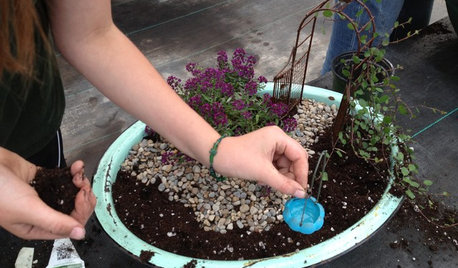
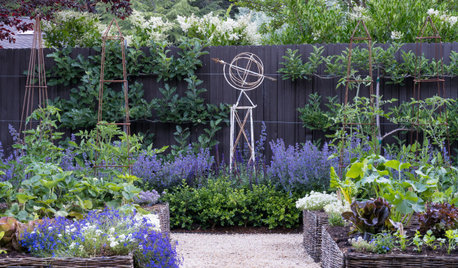
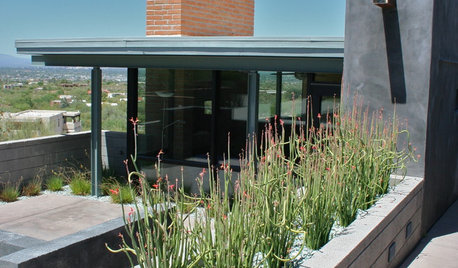
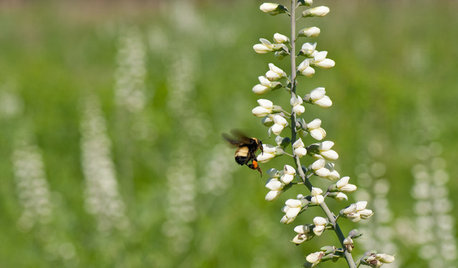
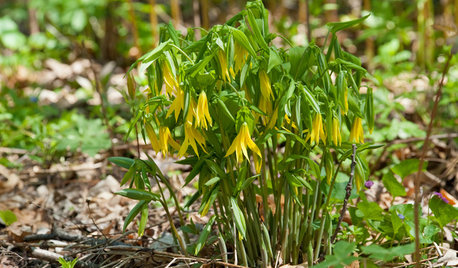
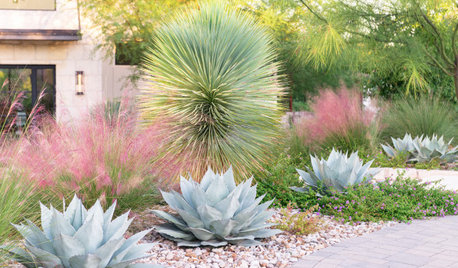
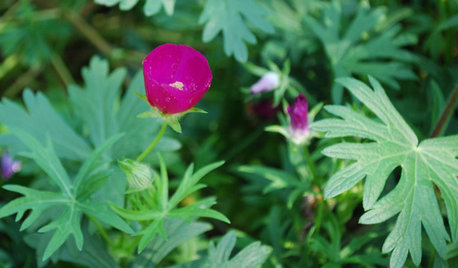
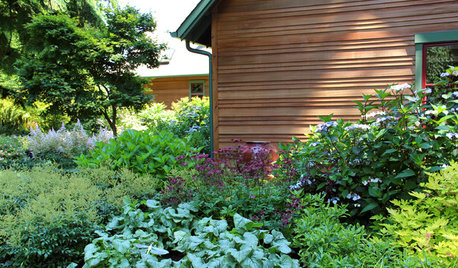
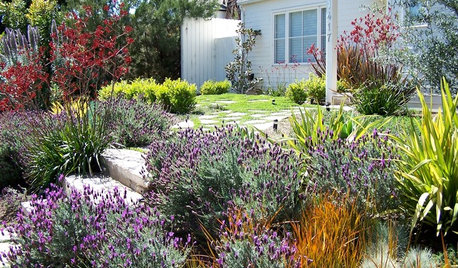






AmyinOwasso/zone 6b